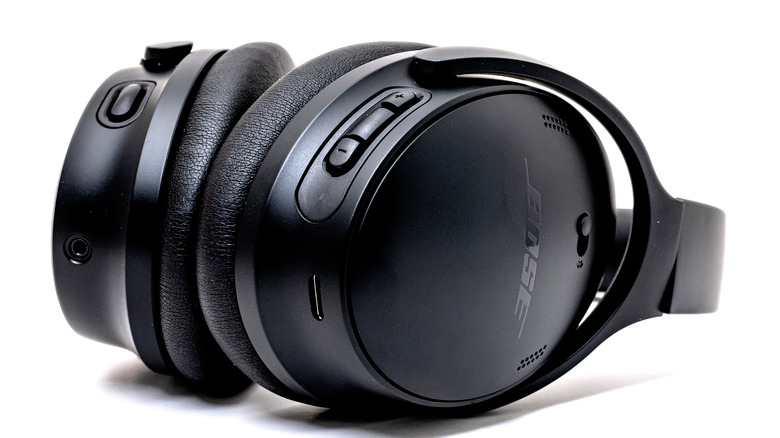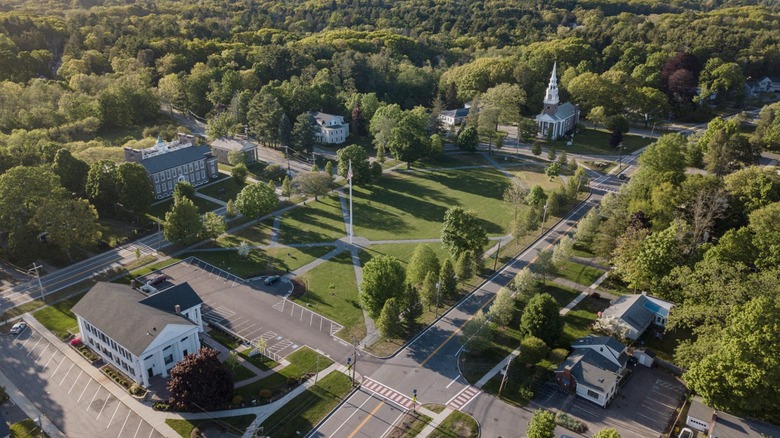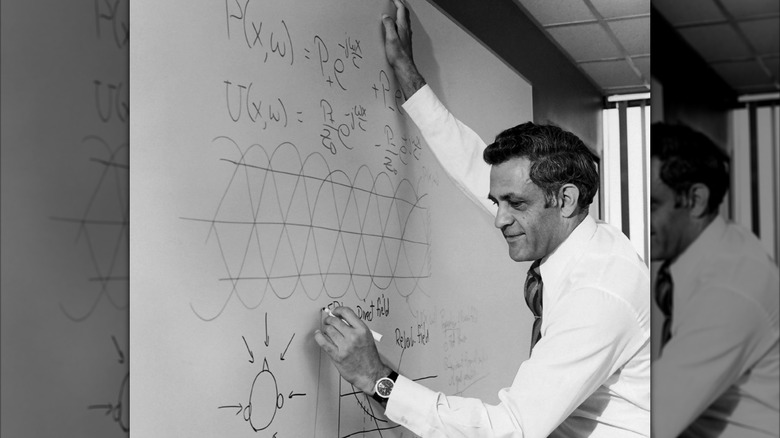Who Owns Bose, And Where Are Its Products Made?
From Bluetooth wireless headphones to earbuds to speakers to soundbars and so much more, the Bose Corporation is one of the preeminent retail destinations for audio equipment worldwide. Right now, Bose is controlled by the Massachusetts Institute of Technology (MIT), but that wasn't always the case.
The company was founded in 1964 by Dr. Amar Gopal Bose, who helped build the business into one of the most successful electronic retailers in the world. But, after owning the company for more than 40 years, Dr. Bose decided he was ready to give up control of his business. So, he donated a majority of Bose's non-voting shares to the school that gave him so much, MIT, in 2011.
Today, Lila Snyder, an MIT graduate – just like Dr. Bose – and the former executive vice president of Pitney Bowes Inc., serves as Bose's CEO. Meanwhile, former Bose president Bob Maresca acts as the company's chairman of the board of directors, a role he has held since 2013. The company is still under MIT's control. While many Bose products are made in the U.S., the organization also has manufacturing facilities in Mexico, China, and Malaysia.
Where are Bose products made?
Bose was founded in Natick, Massachusetts but established its corporate headquarters less than five miles away in Framingham, Massachusetts in 1972, just a 30-minute drive from MIT. Nowadays, Bose has two American manufacturing facilities, which are both located in Massachusetts. The first venue, which was announced in 2006, is located in Westborough, Massachusetts. The other factory in Stow, Massachusetts provided Bose with a sound lab as well as an R&D lab for 18 years until 2021 when the company vacated the facility, moving 1,500 employees back to its Framingham offices.
Bose also has two plants that can be found in Mexico. One facility is based in Tijuana while the other is in San Luis Río Colorado. Both locations are responsible for building and distributing some of Bose's world-famous speaker systems. Another factory is located in Batu Kawan, Malaysia. Originally announced in 2012 before being opened in 2013, this location serves as Bose's distribution hub for the Asia-Pacific and Middle East regions.
Bose has also maintained a factory in Shenzen, China for several years. But, the company recently decided to expand its Chinese operations. As a result, Bose announced this past July that it had held a grand opening ceremony for new offices in Beijing, Shenzen, and Shanghai.
The life and accomplishments of Dr. Amar Bose
Born in Philadelphia, Pennsylvania in 1929, Dr. Amar Bose attended and graduated from MIT in 1956, where he received a PhD in electrical engineering. To celebrate his accomplishment, Dr. Bose bought himself a new hi-fi stereo system but was disappointed by the product's sound quality. This led to Dr. Bose researching acoustics at MIT in his free time, which laid the groundwork for the enterprise we know as Bose.
After eight years of studying sound, Dr. Bose founded the company in 1964. With the help of only two other employees, he would develop power-regulating systems for government entities while the three would experiment with acoustics and sound design in their spare time. By 1986, Bose had developed the prototype version of its first pair of noise-cancelling headphones.
While the leader of the organization, Dr. Bose achieved many technological breakthroughs. One year after developing the prototype of the noise-canceling headphones, Dr. Bose and Dr. William R. Short developed a loudspeaker system that used a folded acoustic waveguide, earning them the Intellectual Property Owners Education Foundation's Inventor of the Year Award. In 2000, Dr. Bose helped the company create its patented QuietComfort technology, which would forever change Bose's product line. Thanks to all of his scientific contributions, Dr. Bose was inducted into the National Inventors Hall of Fame in 2008.
Sadly, Dr. Bose passed away in 2013 at the age of 83, just two years after giving up control of the company to MIT. Though he has been gone for over a decade, his legacy lives on in the Bose products that are still being used and manufactured today.


